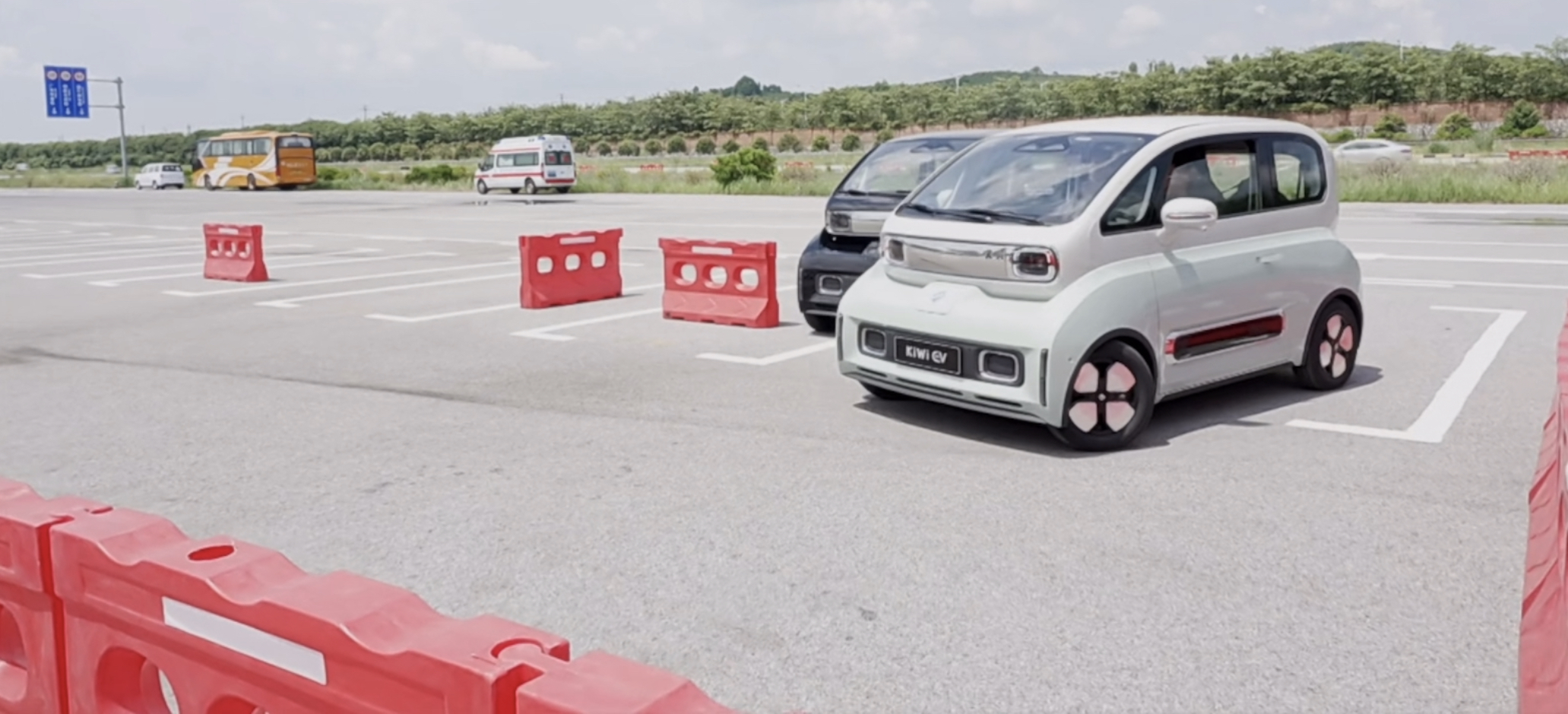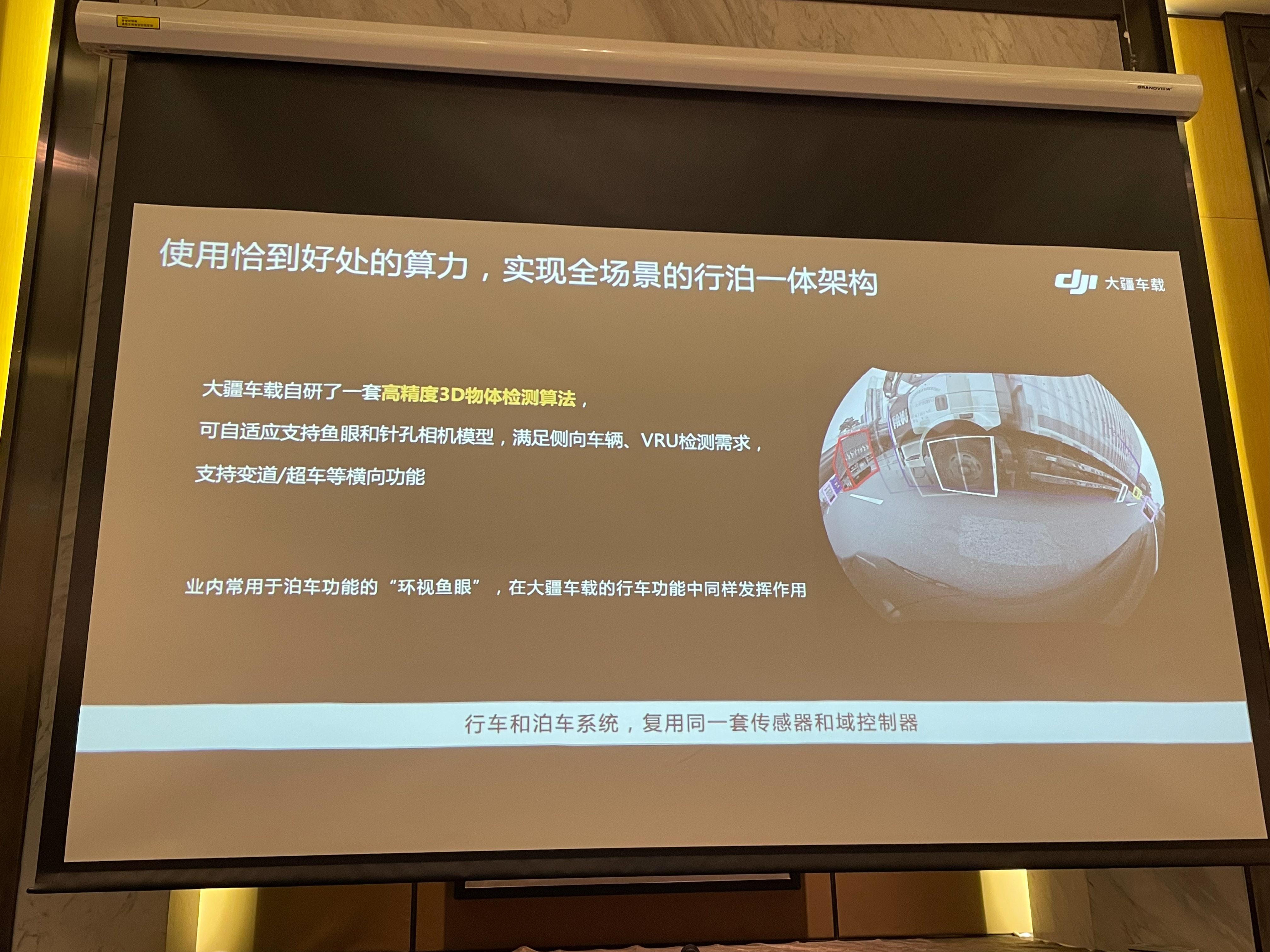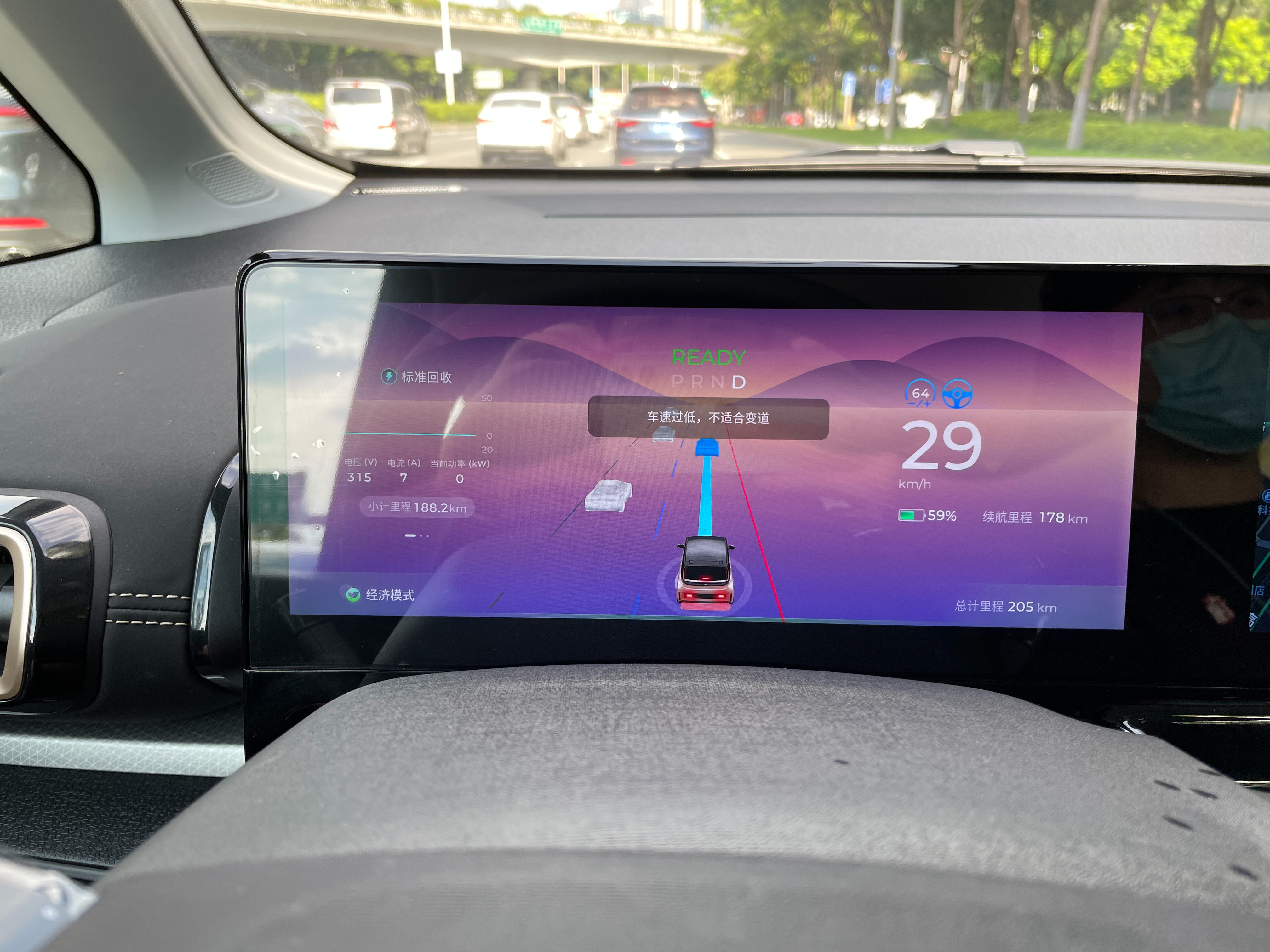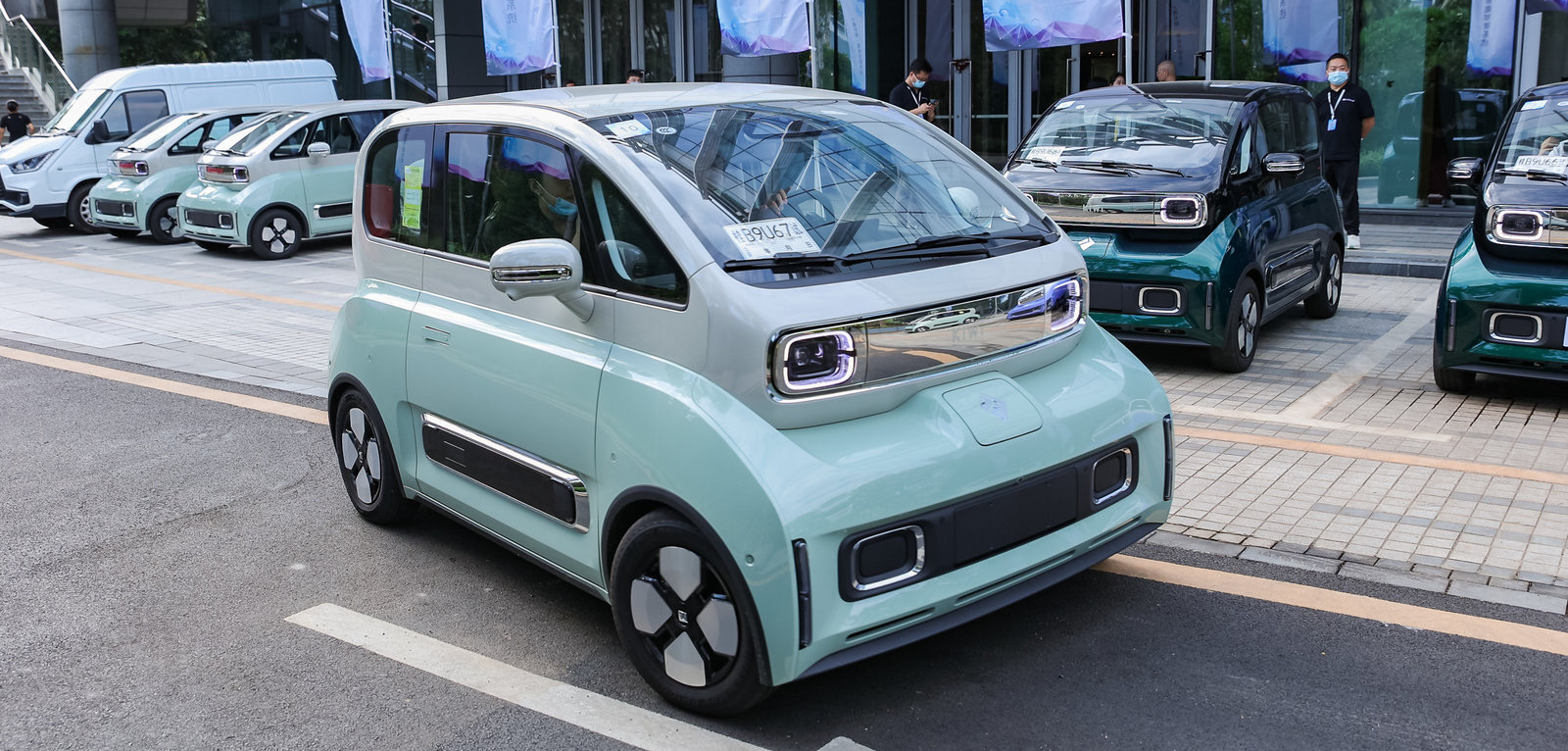On August 24th, following the launch of the first KiWi EV test drive with DJI’s Lingxi intelligent driving system by Baojun, DJI Car held a Mass Production Achievement Communication Conference for its intelligent driving system in Shenzhen. Prior to the conference, DJI Car gave us a trial experience of Lingxi system on KiWi EV.
First of all, the conclusion is that as a 100,000-yuan-level micro pure electric vehicle, KiWi EV provides a stunning driving assistance experience, with overall performance and functions no less than those of intelligent cars priced at 200,000-yuan level.
Let’s start with the hardware. KiWi EV consists of one front dual-camera perception system, four fisheye surround cameras for panoramic imaging, one forward millimeter wave radar, and twelve ultrasonic radars. Without high-precision maps or lidars, it can achieve Level 2 driver assistance, visual automatic parking, and lane change instructions. It can be said that it has achieved a cost-effective and user-friendly driving assistance with the most cost-saving strategy.
Therefore, the purpose of this communication conference is to explore what DJI Car intends to do with this set of driving assistance on KiWi.
KiWi EV’s basic driving experience
We chose to experience KiWi EV on August 24th at around 5 pm, driving on ground roads and urban expressways in downtown Shenzhen, hitting the city’s evening rush hour.
The actual experience shows that KiWi EV offers a good driving experience in terms of acceleration and deceleration during ACC, and mid-line stability during LCC. I deliberately tried to cut into traffic and alternate lanes during rush hour.
First of all, in the most common cut-in situation, KiWi’s visualization is the earliest to inform you that it has detected the front vehicle. Furthermore, it does not wait until the cut-in vehicle has crossed your lane, but makes an early prediction for the vehicle about to cross the lane and slows down in advance, giving a feeling of being driven by an experienced driver.The second scenario is the alternating traffic lane. In this more complex situation, KiWi EV will rush to the front of the alternating vehicle before braking. For drivers who have just started and do not have a high expectation, it is easy to step on the brakes and take over the vehicle. Although the vehicle can indeed give way, the distance left is not sufficient, giving passengers a heart-racing feeling.

The LCC lane centering experience of KiWi EV is also good. During daily driving on roads, the steering correction is relatively smooth and there is no mechanical bumping. Moreover, in the absence of clear lane lines, this assisted driving system has a logic of following the front vehicle, and continues to drive according to the lane lines after the lane lines are restored. Similarly, in the situation of changing from two lanes to three at intersection 2, the vehicle will also follow the front vehicle and look for the lane lines, greatly reducing the situation of assisted driving back and forth.
It is worth mentioning that DJI claims that its in-vehicle system is capable of recognizing any obstacle without the need for prior learning. Generally, when I see the words “any” and “arbitrary,” I unconsciously question it.

However, in the actual experience, KiWi EV’s front stereo camera perception can indeed deal with special situations encountered on the road. When facing construction cones in front, the vehicle will recognize and slow down to avoid them. Previously, my colleague used a camera and stabilizer to act as an obstacle in front of the car during a test drive in Liuzhou, and the vehicle still recognized and stopped.

KiWi EV’s front stereo perception system is like two human eyes, using the visual difference between the two cameras to focus. DJI’s in-vehicle system mainly uses this technology as a lidar, detecting objects using parallax. No matter what the obstacle in front is, it will take the action of slowing down and avoiding first, which greatly guarantees the safety of the vehicle and prevents collisions from occurring.

KiWi EV Parking ExperienceKiWi EV also supports visual parking, with fast recognition of parking spaces and automatic parking using 4 surround view cameras + 12 ultrasonic sensors for perception. It can recognize parking spaces in place and supports parking at any angle, making it very user-friendly.

After activating the automatic parking system and clicking “start parking”, the reaction and parking process were very fast. However, the system still uses a wheel-reversing approach for now. The official statement is that they are working on a side-stepping and steering approach, which will be more advanced.

There is one thing worth mentioning: the parking system only shows flat parking spaces visually and does not merge the parking space with panoramic images. This means that it is difficult to know exactly which parking space you have selected. Hopefully, the two can be combined in the future.
Advanced Driver Assistance System (ADAS) Features
The most interesting feature of the KiWi EV is its ability to perform lane changes on command. Even without millimeter-wave radar or visual perception in the rear, it can perform the entire operation using only a fisheye camera. This is a highly advanced feature, as fisheye cameras are usually only used for low-speed lane keeping.

According to the official introduction, the minimum speed for lane changing is 30 km/h, and the maximum detection distance in the rear is 30 m.

In urban roads, the KiWi EV’s lane-changing system is very fast and aggressive. After signaling, the car immediately changes lanes and has an obvious speed-up logic, which deserves praise.
However, as the system is composed of a fisheye camera, it may be difficult to react to fast-moving vehicles behind the target lane on elevated roads, even with its smart speed-up logic. This may lead to dangerous situations. I inquired with DJI about this and learned more about the logic behind the fisheye camera system.Due to the serious image distortion of fisheye camera, the distant view seen by fisheye camera is blurred together. DJI stated that a self-developed 3D detection has been added to fisheye detection, which projects the distorted image and then identifies it.
At the same time, a set of wheel detection logic has been integrated, and if the vehicle cannot be detected clearly, the wheel will be detected to determine whether it is a vehicle. In other words, there is a certain degree of guessing in the process of identifying vehicles in the distance, which is why the phenomenon of misjudgment may occur when facing high-speed oncoming vehicles.

In addition, the centering ability in corners has not yet reached the best level, and it can only turn around a radius of 75 meters. In the face of large-radius corners, there may be risks of crossing the boundary line without slowing down. At this time, the driver still needs to take over in time.
DJI Carrying also stated that the next version of the OTA is expected to improve this problem. Fortunately, the human-machine co-driving of KiWi is done extremely well, and there will be no situation of fighting for direction between people and vehicles. Take over in time and turn the steering wheel with normal strength, and everything will be back to normal, very smooth.
This is also the advantage of this system with good sense of experience. In the complicated urban road sections, the human-machine co-driving can continue without exiting the auxiliary driving, and the vehicle can still be handed over when needed. This system was polished through emotional testing by 500 users within Wuling, and DJI revealed that it took 2-3 months just to adjust the feel of the steering wheel. If you have the opportunity, you can go and experience it, it will be a new experience.
What does DJI Carrying want to do?
So far, KIWi EV is only the first product of DJI in automotive field, which is improved on existing models, and has not participated in a more comprehensive product definition. According to DJI Carrying, strategic cooperation has been reached with Wuling, and more DJI Carrying products can be seen in the Wuling product line in the future.
DJI Carrying also stated that the D80/D80+/D130/P5/P100 on the official website are only used for promotion demos, and personalized customization will be provided according to user needs and the brand strategy of the main factory. Front 800W binocular, multi-millimeter wave, lidar, and high-precision maps will all be seen. In the words of DJI, “the hardware and computing power should be just right to achieve a good experience.” Judging from the current performance of KiWi EV, it is worth looking forward to adding more types of hardware to other models in the future.
KiWi EV, based on DJI’s on-board system, supports memory parking, and is expected to be pushed via OTA within this year. The KiWi EV we are currently testing also has the ability to self-learn, with room for continuous improvement in its capabilities. What’s most important is that the current price of KiWi EV is between 77,800 and 86,800 yuan, and the cost of this system is approximately 7,000 yuan. What do you think KiWi EV will sell for with the addition of this DJI on-board system?

Actually, the price of the car isn’t so important for DJI at the moment. Instead, it provides a platform for showcasing DJI’s on-board system. DJI aims to let more consumers and manufacturers see the strength of its on-board system by quickly landing this intelligent system on the KiWi EV without incurring high costs. DJI also states that these several systems are not limited to any particular type of vehicle, whether it be an EV, PHEV, or ICE with a 48V light hybrid system, the DJI custom system can be used as long as the vehicle has a central processing architecture, and corresponding hardware will also be provided. In the future of intelligent driving, we will see a new contender guarding the doorway of intelligentization.
This article is a translation by ChatGPT of a Chinese report from 42HOW. If you have any questions about it, please email bd@42how.com.
